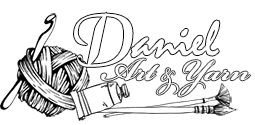The female Hoopoe is an artist who is paid for her work. But before sailing too far into this flightful fancy, you might be wondering, “What is a Hoopoe?”
Common throughout parts of Europe, the Middle East, and North Africa, the Hoopoe (genus Upupa) is an easily recognized bird due to its zebra stripes and crown-like crest of head feathers. There are three different species and nine subspecies, some with different coloration. The Eurasian hoopoe (nine subspecies), the African hoopoe, and the Madagascan hoopoe. A fourth extinct species (possibly flightless), the Saint Helena hoopoe, once inhabited the Island of Saint Helena.
Its name is an onomatopoeia based on the sound of its call. You can hear it in this YouTube video: https://youtu.be/FWCIWj4FBVg
 Israel’s national bird, known as ‘duchifat’ in Hebrew, it shows up in the culture even in biblical times. In Jewish tradition, a Hoopoe led King Solomon to meet the Queen of Sheba, which helps to explain why the Hoopoe won a popular vote in 2008 to become the national bird of Israel.
Israel’s national bird, known as ‘duchifat’ in Hebrew, it shows up in the culture even in biblical times. In Jewish tradition, a Hoopoe led King Solomon to meet the Queen of Sheba, which helps to explain why the Hoopoe won a popular vote in 2008 to become the national bird of Israel.
The Hoopoe figures in mythologies of Arabic, Greek, Persian, Egyptian, and other cultures, but with a wide variety of meanings. For instance, in Scandinavian mythology, its appearance was feared as a harbinger of war. It is also mentioned in Ancient Greek, Egyptian and Chinese texts, including in Chinese poetry inscribed over bamboo.
With a reputation for both its striking beauty and, less fortunately, for its skunk-like stench, the hoopoe has a orangish-brown body, about 10 to 11 inches in length. Its beautiful striped wings have about a 17 to 18 inch wingspan, and when in flight, the wings are broad and rounded.
Why an Artist?
It is the only bird that paints it’s eggs! When laid, the eggs are dark, Cerulean blue. Shortly after she lays her eggs, the female will begin “painting” them, using her beak to pull an oily substance from a gland at the base of her tail. After she finishes painting, it will be a light gray. The oil fills the pores in the shell and helps to prevent disease.
She Even Gets Paid for Her Work!
 In a study by a team of researchers from Universidad de Granada and Estación Experimental de Zonas Áridas, both in Spain, the researchers found that “male hoopoes provide more nourishment to female mates who paint their eggs well.” So her painting pays off because the males seem to be aware of the benefits of well-painted shells and pay by providing her with more food!
In a study by a team of researchers from Universidad de Granada and Estación Experimental de Zonas Áridas, both in Spain, the researchers found that “male hoopoes provide more nourishment to female mates who paint their eggs well.” So her painting pays off because the males seem to be aware of the benefits of well-painted shells and pay by providing her with more food!
You can read more about the study at this link: https://phys.org/news/2021-05-male-hoopoes-extra-nourishment-eggs.html
There is a lot of information about Hoopoes easily accessible on the internet. Daniel Art and Yarn has these works available to buy:
- Hoopoe in Flight 8″x10″ Acrylic Painting:
https://danielartandyarn.com/product/hoopoe-in-flight-painting/ - Hoopoe Mother and Chick 11″x14″ Acrylic Painting:
https://danielartandyarn.com/product/hoopoe-mother-and-chick-painting/ - Hoopoe in Flight Giclee Print:
https://danielartandyarn.com/product/hoopoe-art-print/
We hope you’ve enjoyed our fun facts about the Hoopoe!

